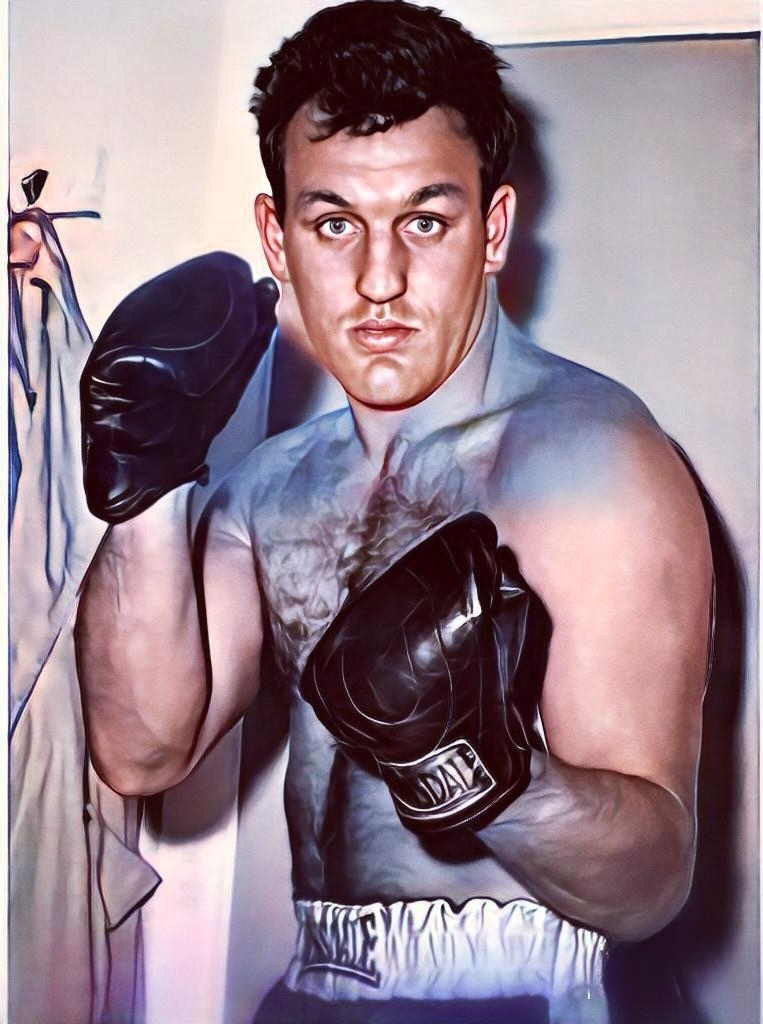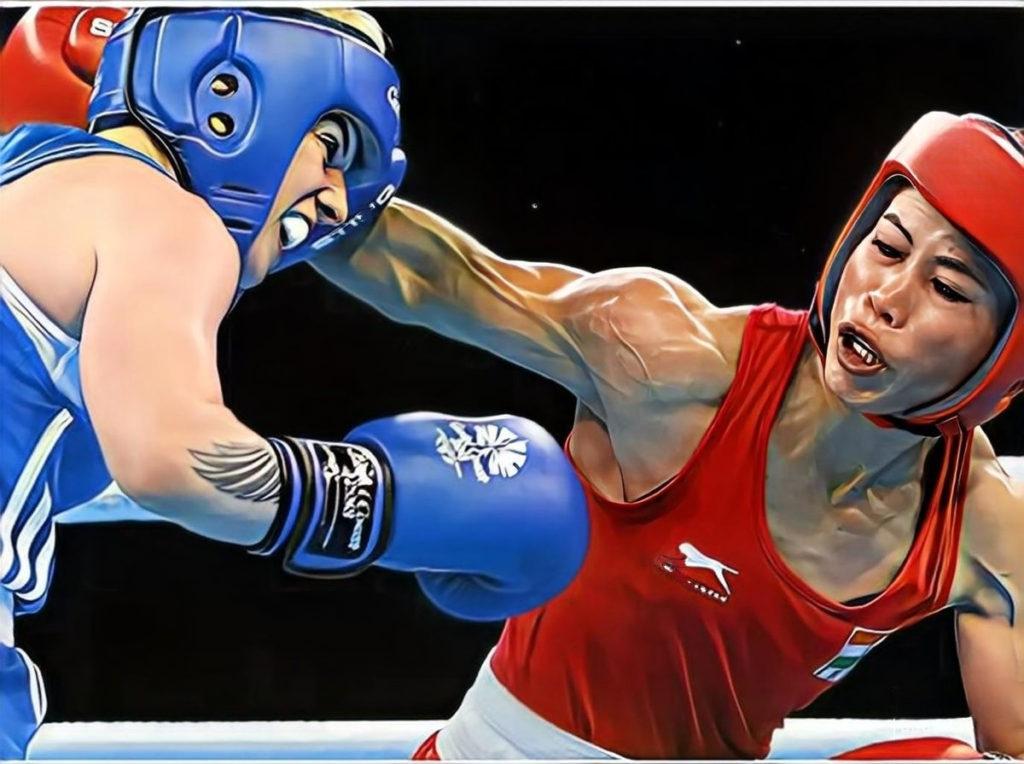History of the Origin and Development of Boxing

Boxing is a fighting game that has been popular for centuries, and its origins can be seen in ancient times. The first recorded evidence of a cushion is found in ancient Egypt, where paintings of gloved cushions have been found on walls and maps. This sport also flourished in ancient Greece, where it was incorporated into the Olympic Games.
Through history, boxing has evolved, and its rules and regulations have undergone many changes. In the 18th century, boxing became a popular sport among audiences in England, with the first fighters wearing gloves. The Marquis Rules of Queensbury, developed in the late 19th century, established the basic rules of modern boxing, which included the use of gloves, the introduction of weight classes, and the prohibition of hitting under the belt.
In the United States, boxing gained popularity in the 20th century with the rise of famous figures such as Louis and Muhammad Ali and Jack Dempsey. Boxing became a major sport in America, with television matches attracting millions of spectators. Sports have also been the subject of controversy, with safety issues and concerns about the use of performance-enhancing drugs.
In the last few years, with the emergence of new weight categories, the onset of female boxing, and the appearance of various boxing styles, there have been significant changes in the form of boxing. This game has also had a significant impact on the popular culture of making and watching boxing films and documentaries by millions of people around the world.
Despite its changes, boxing has remained a beloved and respected sport with a rich history and a loyal fan base. Its consistent popularity is a testament to the ability of the game to seduce and inspire people around the world, and it is one of the most exciting and entertaining games to watch and participate in.
Ancient Greek Artists
Ancient Greek boxing was a popular boxing game that originated in Greece during the classical period, around 776 BC. This sport was incorporated into the Olympic Games and was highly regarded by the ancient Greeks, who regarded it as a test of strength, skill, and endurance.
In ancient Greece, boxing was a cruel game in which boxers were allowed to use their fists as well as their legs, knees, and elbows to defeat their opponents. There was no load class, and the battle could last for several hours with no rounds or breaks. To defend your hands and increase the influence of your fighters, fight by wrapping your hands in leather or clothing strips, called Himalayas.
The game was divided into two categories: the fighter, who fought with his fist, and the PX, who battled with both his fist and legs. Matchers will be matched based on their size and skill level, and the winner will be determined by knockout or submission.
In ancient Greece, there were strict rules that controlled the behavior of initiatives. Fighters were not allowed to beat their opponents when they were down, beat them from behind or beneath the belt, or use dirty strategies such as cutting or striking.
In ancient Greece, the game of boxing was highly respected, and successful boxers were celebrated as heroes. They will be honored with olive trees as well as other awards such as money and livestock.
Despite its violent nature, ancient Greek boxing was considered an important part of the Greek cultural and athletic heritage. It was a symbol of power, courage, and endurance, and it has remained a lasting legacy of ancient Greek civilization.
Kulachniy Boy – Russian Boxing

Kulachniy Boy, also known as Russian boxing, is a traditional form of martial arts and martial games that originated in Russia during the 18th century. Lay is a unique style of bare-fingered boxing that includes a variety of wrestling, ticking, and wrist techniques.
The sport was originally developed as a form of self-defense against pirates and other criminals roaming the countryside. It quickly gained popularity among the Russian people and became a respected martial art with strong master support.
In Kulachniy Boy, fighters are not allowed to wear gloves or any other protective gear, making it a group sport and challenging. Fighters must rely on their skill, strength, and stamina to succeed, and multiple country matches can run with no time limit.
The game is known for its emphasis on a wide range of punches such as “Whipp” and “Hock”, as well as the use of leg sweeps, thrones, and submission holds.
In recent years, there has been a resurgence of interest in Chernobyl basketball in Russia, with a number of organizations promoting the sport and hosting tournaments. It has also been recognized in other countries around the world. Fighters are participating in international events.
Despite their violent nature, Chinatown boys are considered an important part of Russian cultural heritage and a symbol of national pride. It has a rich history and a loyal following and has become a challenging and respected fighting sport that requires skill, strength, and courage to master.
Prize battle in London

The Battle of the Prize in London refers to the boxing game that took place in the British capital during the 18th and 19th centuries. Despite being condemned by many members of society, it was a cruel and often illegal form of war that attracted a large audience.
In the early days of the battle of the prizes, there were no rules or laws governing the game. Fighting involves a round or time limit of bare-ring fights that can last for hours. It was a dangerous and often fatal activity, with common injuries and deaths.
Despite the risks, with sponsorship and participation in matches by rich supporters and members of the noble class in London, the battle of the awards gained popularity. The game also became a source of income for many fighters, who wandered across the country while competing in matches for cash prizes.
In the mid-19th century, with the introduction of rules and regulations, the development of the sport began, the aim of which was to make it safe and more tasty for the general public. Gloves were introduced, rounds were set, and the fighters were given a period of rest between fights.
This new version of the game, known as modern boxing, eventually captured the prize battles popularity, but the legacy of prize battles in London can still be seen today. The city has a rich boxing history, including several famous fighters from London, including Lenox Levis, Frank Bruno, and David Ha.
The prize battle in London was a cruel and often illegal form of boxing that attracted a large crowd of spectators. While the game eventually paved the way for modern boxing, its legacy can still be seen in London’s rich boxing culture today.
Marquess of Queensberry Rule (1867)
The Queensberry Rules were a set of Marx Boxing Rules established in 1867 to control the game of boxing. These rules were named after the Marquis of Queensberry, who were champions of the sport and were major advocates of improving the existing rules of boxing.
Prior to the introduction of the rules of the Marquis of Queensberry, boxing was a cruel and often dangerous game with certain rules. Fighting involves a round or time limit of bare-ring fights that can last for hours. The game was often associated with gambling, and several matches were decided to make sure that the results were favorable to some individuals.
The rules of the Marquis of Queensbury aim to make boxing a safer and more regulated game. He introduced several new rules, which include stopping the use of gloves, setting rounds, and hitting under the belt. The fighters also needed to wear mouthguards and socks.
These new rules had a significant impact on the game of boxing, making it more accessible and attractive to a wider audience. Boxing matches with clear rules and regulations implemented by the referee became more structured and predictable. The game also became more respected, and many new fans and followers joined the category of its supporters.
Today, modern boxing rules are based on the Marx-Queensberry Rules. Although some amendments have been made recently, such as initiating load classes and implementing electronic scoring systems, the rules still follow the basic principles.
Marquess Queensberry laws marked a historic moment in the history of boxing. He transformed the game from a cruel and irregular activity into a structured and respected form of war. Today, the rules remain an important part of the game, helping to ensure that boxing remains safe, fair, and entertaining for all involved.
Boxing in the United States

Boxing has a long history in the United States. It has been a popular sport in the country for more than a century, with millions of fans coming to watch professional fights and amateur tournaments equally.
Boxing in America has produced some of the most prestigious figures in the sport, from Muhammad Ali and Joe Frazier to Mike Tyson and Floyd Mayweather Jr. These fighters have captivated audiences around the world with their talent, skills, and charisma.
In the last few years, there have been many changes to this game, with new rules and regulations introduced to make it safer and more attractive to a wider audience. Founded in 1867, the Marquis of the Queensberry Rules was a major milestone in the development of modern boxing, setting the standard for how the game is fought to this day.
In addition to professional boxing, there is a thriving amateur boxing scene in America. The country has produced several Olympic gold medal winners, including Cassius Clay (Mohammed Ali) and Sugar Ray Leonard, who have progressed to become successful professional fighters.
Boxing, along with many sports-inspired films, books, and songs, has also had a significant impact on American culture. From rockies to racing bulls, boxing has provided a rich source of content for filmmakers and writers.
Despite its popularity, boxing has faced some challenges in recent years, including security concerns and the rise of other martial arts such as mixed martial arts. Although the game has remained a beloved part of American culture, millions of fans have continued to advance the careers of their favorite fighters.
The United States has a rich and diverse history of boxing, ranging from prestigious celebrities who have extended the ring’s presence to millions of fans who continue to support the game. While the sport faces challenges, its heritage and impact on American culture cannot be denied.
The History of Amateur Boxing

Amateur boxing has an interesting history that dates back more than a century. A controlled and regulated environment for young people to compete away from the dangers and curses of professional boxing developed in the late nineteenth century.
In the United States, one of the first known amateur boxing competitions took place in 1888, and the first national amateur championship was held in 1889. As amateur boxing grew in popularity, clubs and organizations across the country promoted and regulated it.
Amateur boxing began by focusing on boxing methods and skills, requiring competitors to demonstrate their skill in plays, blocks, and various forms of footwork. The sport was also known for its emphasis on fair play and respect, with competitors expected to behave with integrity at all times.
Amateur boxing rules and regulations have evolved over time, with new weight classes, scoring systems, and safety considerations added to make the sport safer and more accessible. Amateur boxing is now a well-known and respected sport around the world, involving millions of athletes and spectators at all levels.
The rich history of amateur boxing reflects the values of sportsmanship, skill, and fair play. From its origins in the late 19th century to the present day, the game continues to fascinate and inspire generations of fighters and fans.
History of Professional Fighting
Boxing techniques and skills were at first the primary focus of amateurs, with competitors expected to show their mastery in tricks, blocks, and other footwork techniques. Attention to respect and fair play in the sport was also ubiquitous, and competitors were always urged to conduct themselves respectfully.
Amateur boxing rules and regulations have changed over time; new load classes, scoring systems, and safety-related ideas have been adopted to make the game safer and more accessible. Today, amateur boxing is a popular and respected sport with millions of participants and fans at all levels.
The arrival of the Marquis of Queensbury in 1867 was one of the most significant moments in the history of professional battle. This rule made the game safer and more accessible by requiring the use of standardized gloves and load compartments.
From Jack Johnson and Joe Levis to Muhammad Ali and Mike Tyson, professional fighters have created some of the most recognizable figures in sports history. Because of their abilities, skills, and charismatic temperaments, these fighters have attracted audiences around the world.
Professional boxing is now a multi-billion dollar industry, with athletes from around the world engaging in high-profile matches that attract millions of fans despite ongoing concerns about the safety and moral ramifications of prizefighting, the sport’s legacy, and popular culture. But its effect cannot be ignored.
The bravery and skill presented in the history of professional boxing have all played a significant role in its beginnings as an important worldwide sport and in its current status as a top global sport. but there has been a constant presence on the disciple.
Go to home page: